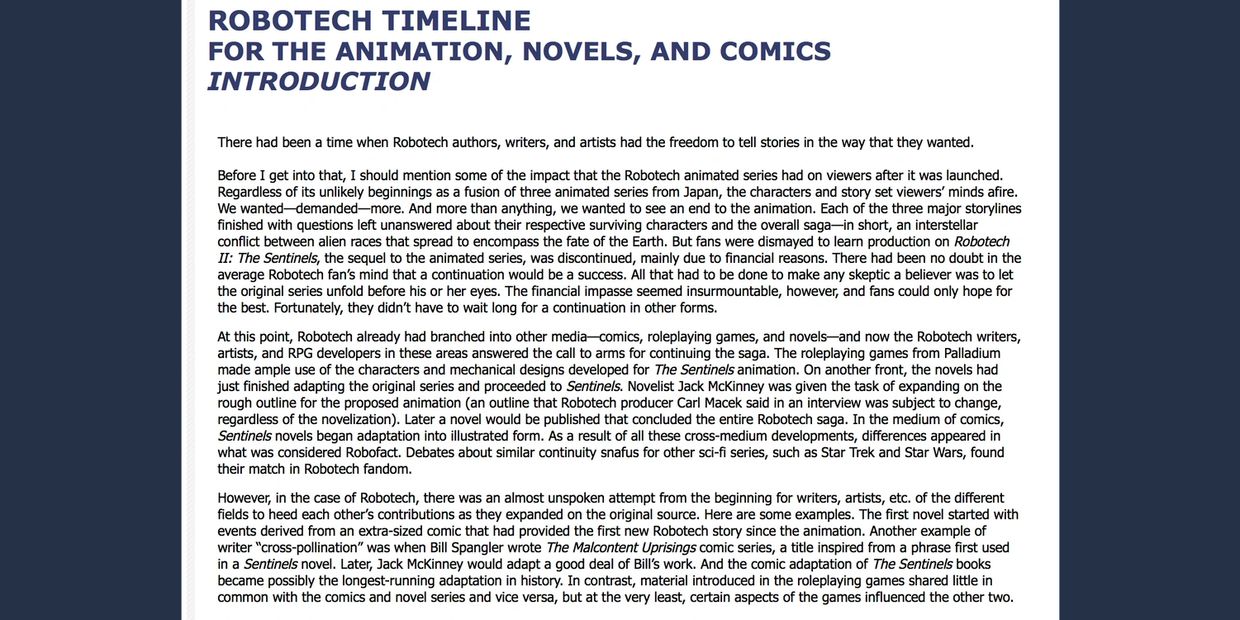- Main Page
- Robotech Continuity
- Video/Comics Cont'y Intro
- Video/Comics Continuity
- V/C Cont'y - Easier Read
- Robotech Novels Intro
- Novels Continuity
- Novels Cont'y Easier Read
- Logic Behind the Order
- Robotech Timeline Intro
- TimelineAndReferences - 1
- TimelineAndReferences - 2
- Timeline Notes
- Timeline Streamlined - 1
- Timeline Streamlined - 2
- Robotech Timeline - About
- Novels Support - About
- Q&A With...
- Q&A With Bill Spangler-1
- Q&A With Bill Spangler-2
- Bill Spangler Follow-Up
- Q&A With James Luceno-1
- Q&A With James Luceno-2
- Miscellaneous
- Jen Heddle Robo Recall
- Sitemap
- About
- Contact
PAGE UNDER RECONSTRUCTION

Robotech Timeline for the Animation, Novels, and Comics -- Introduction
My service provider is foisting new web templates on me, so I am steadily working on updating the website accordingly and whenever I am not doing other things. In the meantime, check out this series of cropped screenshots of the essentials for this particular page.



JOIN Us
Robotech Timeline for the Animation, Novels, and Comics -- Facebook
Become a fan at--
Robotech Novels – Support the True Books By the Original Authors -- Facebook
Support the true authors. Visit--
A NOVELS CAUSE
From the "Robotech Novels Universe" Facebook page comes a petition that everyone should know about
Robotech fans want all the books back, and they want them all presented right, as intended by the actual JACK MCKINNEY co-authors JAMES LUCENO and BRIAN DALEY.
Note: MegaSciFi.com, "Robotech Timeline for the Animation, Novels, and Comics," and its sister online presence, "Robotech Novels – Support the True Books By the Original Authors," are not affiliated with "Robotech Novels Universe." A Change.org petition, whose link is included below, is a product of "Robotech Novels Universe." In any case, should you agree with this petition's goals of having the Robotech novels returned to publication in a manner respectful to the authors, along with the petition's other objectives, then sign and leave a comment at--
https://www.change.org/ROBOTECHNOVELS
Mecha 8
All writings and images belong to their respective copyright and trademark owners.
Content exclusive to site: Copyright © 2022 Mecha 8. All rights reserved.
Powered by GoDaddy
This website uses cookies.
We use cookies to analyze website traffic and optimize your website experience. By accepting our use of cookies, your data will be aggregated with all other user data.